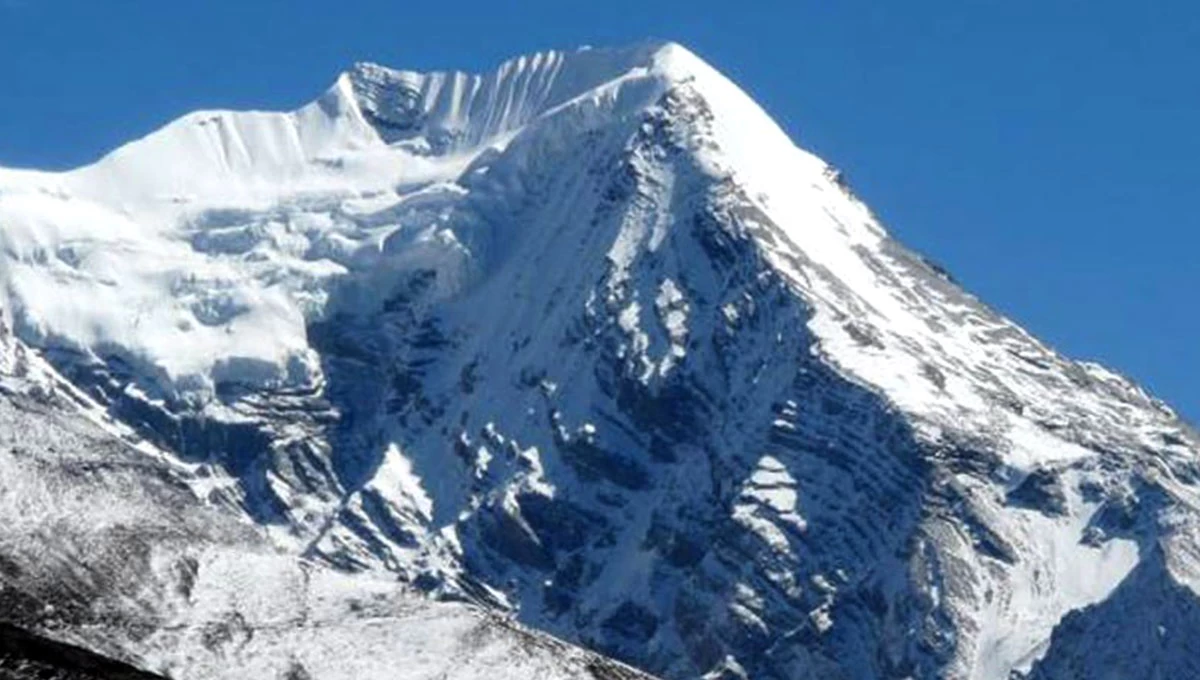The Himalaya of Nepal is the world’s most exciting destination for climbing. 414 peaks are open to mountain climbing in Nepal and summiting a Himalayan peak can be an adventurous challenge and exhilarating experience of a lifetime.
Pisang Peak (6,091 mt / 19,970 ft) is located along one of the most magnificent areas of the Himalaya, the Annapurna Circuit. It was first climbed by a German team in 1955. TheAnnapurna Circuit has long been one of the favorite destinations of trekkers from all over the world. The Annapurna Region receives more trekkers than any other region of Nepal and is famous for scenic natural beauty and cultural diversity.
Along the way to Pisang Peak, you will experience magnificent scenery along the eastern valley of the circuit, following the lush Marsyangdi River valley up into the highlands with staggering mountain views. The summit of Pisang Peak offers an astonishing panorama of the surrounding peaks and beyond into remote valleys in Nepal and Tibet. Pisang Peak can be attempted by all comers, even people without mountaineering know-how and experience, and we will brief you on the use of equipment. Still, it will be demanding and should be attempted only by people fit and acclimatized to high elevation.
The Annapurna Circuit is entered by an enchanting weeklong hike from the lowlands. Our team assembles in Bhulebhule and together we ascend through the Marsyangdi River valley on an unforgettable hike up to Pisang village.
We climb through yak grazing areas and establish our base camp at an area with spectacular views at around 5,400 mt / 17,710 ft. From base camp, when the timing is right we push for the summit along the southwest ridge. Along the way, up and on top of the mountain we enjoy an unforgettable sunrise that lights up the Himalaya with marvelous views of the Annapurna Range and Manaslu, the world’s 8th highest peak and much more.
Following the thrilling achievement, we have options to return the way we come in or to continue on and enjoy the rest of the Annapurna Circuit including Thorang La with optional side trips to Tilicho Lake, Mesokanto-La Pass,Naar, and Phu villages and more including Upper Mustang, Mansalu, and Tsum Valley.
Along the journey to Pisang Peak, we include adequate rest days in the trek to ensure acclimatization. On these days, we take the chance to explore the beautiful surrounding area while we become accustomed to the altitude.
The Pisang Peak timetable is planned by veteran climbers with special attention to season and safety. We always adhere to the highest safety standards and ensure that this trip is designed for comfort and well-being, especially by following a graded ascent with proper acclimatization.
There are no set departure dates for Pisang Peak although the best period for reliable weather and views is March through May followed by September through November.
Please contact us anytime with questions and concerns and for booking. Let us know your preferred schedule, and we will arrange a climbing trip according to your timetable.
Pisang Peak includes camping and is fully supported. You carry only a light pack, and we will arrange a crew of porters to transport provisions and gear, including food and a dining tent, tables, chairs, a toilet tent, and personal sleeping tents. Our skilled chef will provide the day’s meals and in the evening we will enjoy a magnificent camp under the stars, surrounded by the Himalaya and jaw-dropping surroundings while we enjoy a supper and a warm drink.
There is a lot to explore in the area that can be easily combined with Pisang Peak climbing. Please let us know if you have the time and interest and would like to extend your journey to this area.
We look forward to guiding you on the adventure of a lifetime to the top of the Himalaya!
